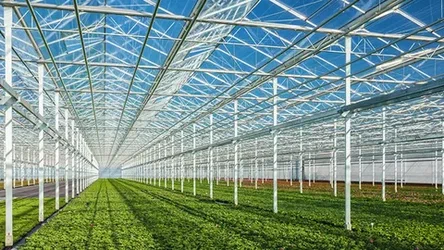In the Big Sandy area of Montana, renowned organic farmer Bob Quinn has implemented a groundbreaking agricultural innovation—a subterranean greenhouse. Known for his contributions to organic farming, including the development of Kracklin’ Kamut snacks and the establishment of the Quinn Institute, Quinn continues to push the boundaries of sustainable agriculture.
Quinn’s subterranean greenhouse, inspired by the Nebraska-based ‘Greenhouse in the Snow,’ represents a significant leap in organic farming. The concept, which Quinn discovered a decade ago, aims to grow citrus fruits in Montana’s challenging climate. “What I’m trying to do on my farm is grow everything I eat and eat everything I grow,” said Quinn. “I’m up to about 85% of what I eat now is from my farm. There’s a big gap when it comes to citrus, so this helps to fill the gap.”
After visiting Nebraska and witnessing the successful cultivation of oranges, lemons, and grapefruits, Quinn was determined to bring this technology to Montana. With the collaboration of local farmers, it took approximately two years to construct the 17 by 90-foot cement-walled greenhouse. Due to Montana’s northern location, the structure was built eight feet underground, as opposed to the four feet recommended for Nebraska, to better insulate against the colder temperatures.
This innovative approach allows for the cultivation of citrus fruits, which typically require a warmer climate, by leveraging the earth’s natural insulation properties. The subterranean greenhouse maintains a more stable temperature year-round, reducing the need for external heating and cooling, and making it a more sustainable option.
For entrepreneurs and investors interested in sustainable agriculture, Quinn’s subterranean greenhouse offers a compelling model. It demonstrates the potential for innovative solutions to overcome environmental challenges and expand the range of crops that can be grown organically in diverse climates. This method not only enhances food security by enabling local production of typically imported produce but also aligns with the growing demand for sustainable and self-sufficient farming practices.
Quinn’s dedication to sustainability and innovation continues to position him as a leader in the organic farming community. His subterranean greenhouse project is a testament to the possibilities that arise when traditional farming methods are reimagined with modern, eco-friendly technologies.











